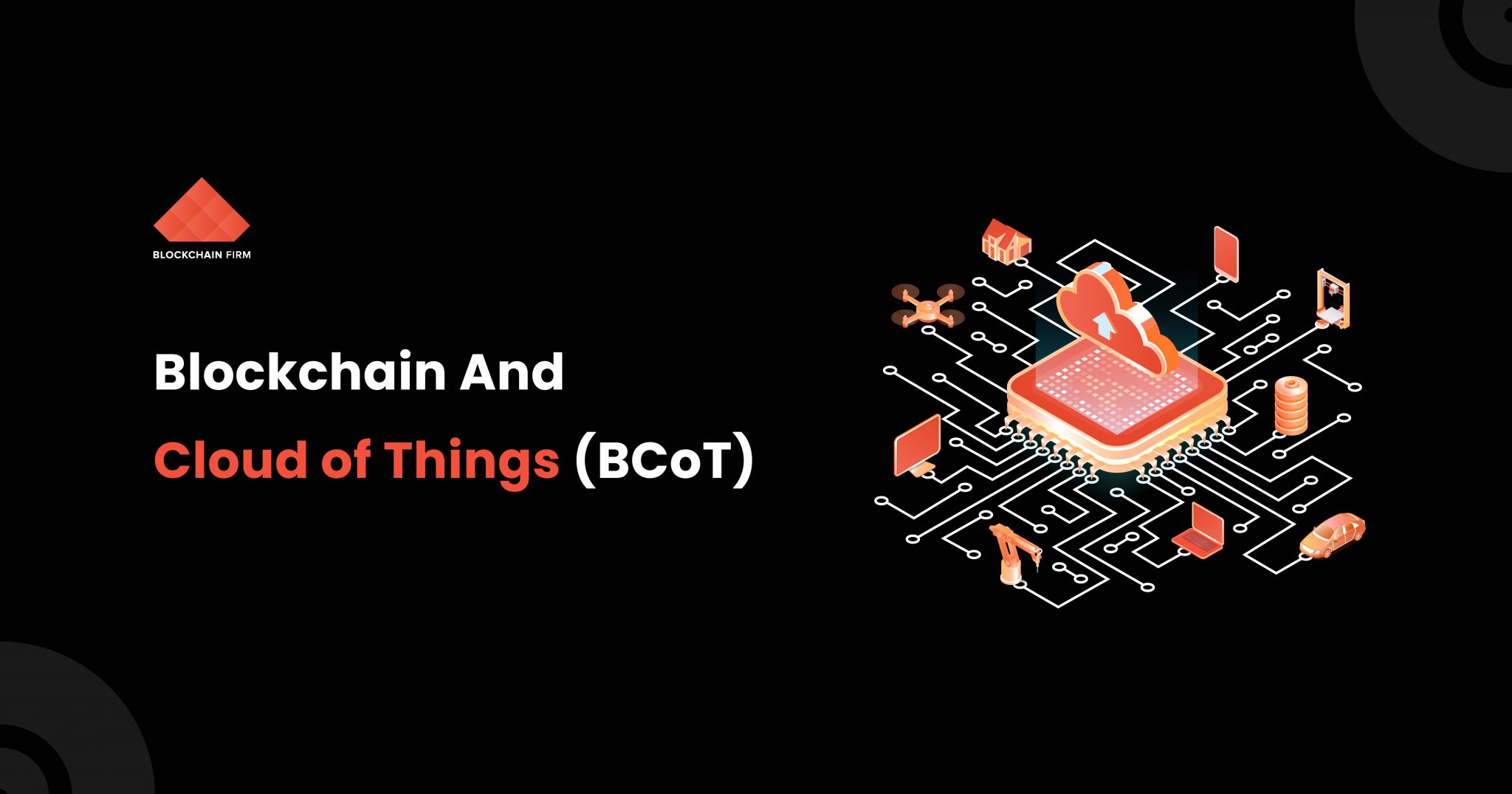Blockchain has gained huge popularity since the introduction of Bitcoin. However, Blockchain use cases have now moved beyond cryptocurrency. Blockchain is known for its unique characteristics of decentralization, transparency, traceability, and enhanced security which has opened up a lot of opportunities for many industries. Among them, CoT is influenced by distributive blockchain technology and renders exciting real-time applications. Here, CoT means the integration of cloud computing and the Internet of things. Both these cutting-edge technologies have brought revolutionary changes and help to do work smarter and better. The main challenges incurred in CoT are related to security, data privacy, and centralization. Thanks to Blockchain technology, a reliable solution that eliminates the CoT problems and helps to implement an efficient, secure, and flawless system.
In this blog post, let’s explore the concept of CoT and the renaissance of CoT with blockchain integration.
What is CoT?
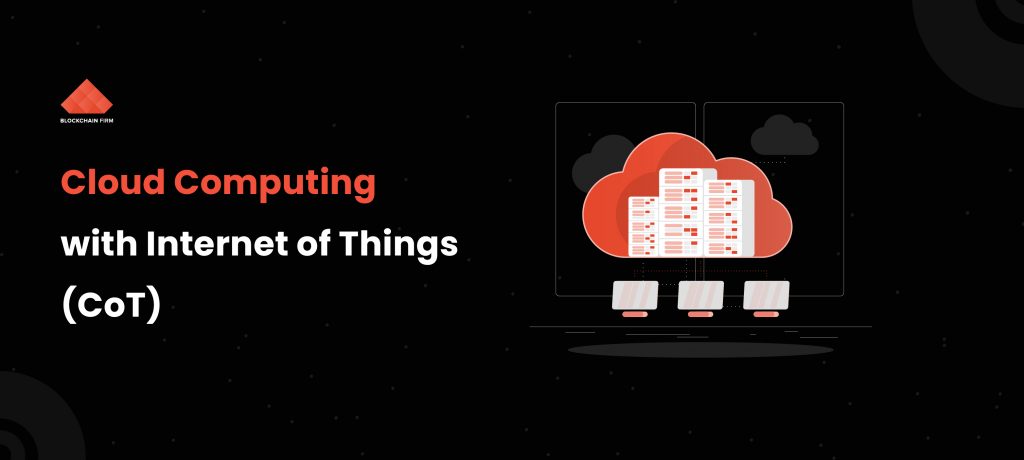
You all know that the Internet of things is an Internet-connected system that is able to gather and transfer data over the wireless network without human participation. Real-time examples of IoT are smart home security systems, wearable health monitors, smart factory equipment, and Self farming equipment.
On the other hand, cloud computing is the delivery of computing services through the internet. It facilitates online access to IT resources, including servers, storage, database, networking, softwares, and computing power. Many organizations are turning to cloud computing to leverage the benefits of faster innovation, lower operational costs, best scalability, reliability, and high performance.
When integrating cloud computing with the Internet of things, a new paradigm is created known as a cloud of things (CoT) which provides a new business model with high efficiency. It is a cloud-based IoT application platform that facilitates remote controlling, monitoring, and managing IoT devices.
What are the Issues in CoT?
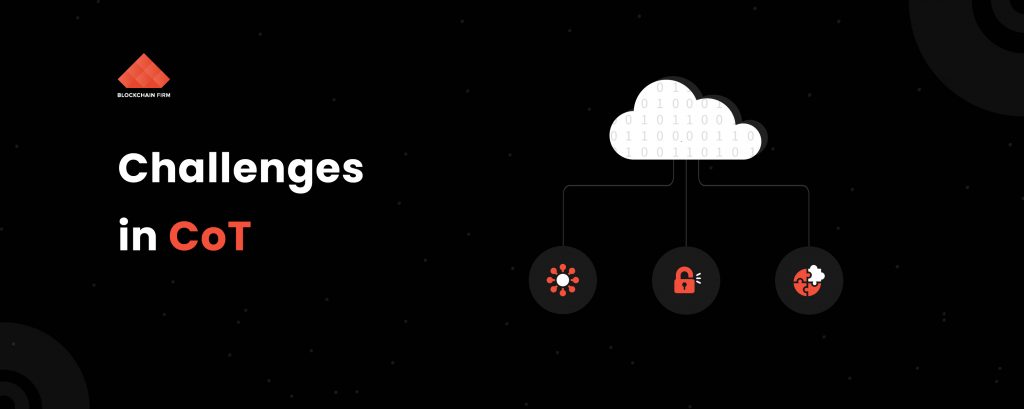
Cloud computing offers ubiquitous computing services with large data storage and high performance but still holds some critical challenges.
Centralized Control
In the current system, the cloud computing services are managed and controlled by a central authority. However, this configuration paves the way for many security threats and single points of failure. It makes the system easy to hack when a single node is affected. It increases data leakage, data modification, data loss. Also, the centralized system is not effective and cannot provide seamless provisions of IT services when multiple users requested at the same time. It is more vulnerable to software bugs and cyber attacks.
Privacy Problem
Even though the centralized CoT business model offers quality IT services, it is subjected to critical privacy concerns. When a large amount of data is collected, stored, and used on dynamic cloud networks. The IoT users trust the cloud providers while knowing little details about how the information is transmitted, Is it safe, and who is currently utilizing the data in a broader network. Also, note that IoT data is not fully distributed and it is vulnerable to data leakage and data hacking. All these concerns urge us to encounter new possibilities to enable secure transactions without compromising privacy.
Data Integrity
The storage and utilization of data on clouds may rise to integrity concerns. When the IoT users trust centralized cloud providers, outsourced data is put at risk of being altered or deleted by third parties without the user’s approval. Moreover, the central authorities can do these kinds of misleading actions for different purposes, all of which can breach data integrity. Therefore, new solutions could be needed for efficient CoT systems.
The Advent of Blockchain Technology
Blockchain is an emerging technology that keeps recording and storing the data of all transactions across different nodes in a distributed and decentralized manner. It uses consensus mechanisms to implement high-security systems and makes it harder to hack and tamper.
Blockchain has its unique characteristics to blow away the challenges in CoT systems. It is only a reliable solution that can avoid centralized problems and enable powerful, faultless, secure CoT systems.
Integration of Blockchain and Cloud of Things(BCoT)
Independently, the blockchain and CoT have many advantages and a bright future. To get combined benefits, the BCoT is evolved and opens up a wide range of opportunities, and renders real-time use cases to rejuvenate every industry.
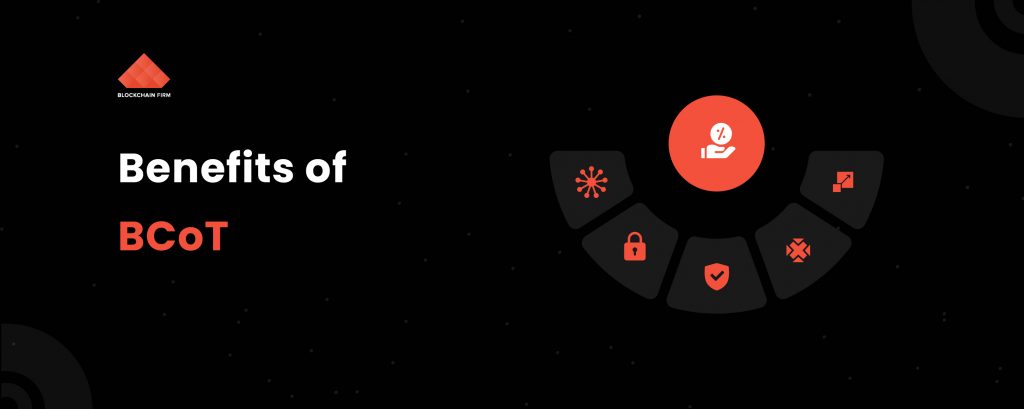
Decentralized Data Management:
The major problems linked in CoT systems are related to centralization, which can cause the single point of failure and security threats. Adopting blockchain can implement decentralized BCoT management architecture under the distributed control of peer-to-peer networks on cloud nodes and IoT devices. All the blockchain nodes can have identical replicas of transaction data records in a distributed and decentralized manner. Through consensus mechanisms and hash functions, blockchain could ensure the security of the data and provide an additional security layer to data protection. Also, it avoids a single point of failure bottlenecks, prevents performance distribution, and helps to achieve increased efficiency.
Improved Data Privacy
The outsourcing of IoT data is vulnerable to data disclosure and attacks caused by third parties. It can be redefined by blockchain integration in which there is no possibility for data leakage or data loss. As blockchain is an immutable, distributed, public ledger technology, it allows all participants to view the transactions in real-time, which could prevent the attacks or helps to notify them at the moment of time. As a result, the significant properties of blockchain could avert the privacy challenges and help to maintain a trustworthy, stable, and faultless BCoT network.
Enhanced Security
When digital advancements rise, there is also an increase in the cases of online frauds and misinterpretations. Currently, the blockchain is considered to be the highest security system that can eliminate reliability issues. Indeed, in BCoT networks, all the records are cryptographically encrypted, and all the transactions are verified by the participant so that all the user interactions with the cloud remain secure and confidential. Also, the decentralized nature of blockchain allows users to view the transactions in real-time, which could avoid cyber-attacks and ensure the security of transactions over the cloud network.
Reduced System Complexity
The limitations of blockchain are related to system implementation as it has consumed high costs. Integrating with CoT can offer blockchain as a service to enable on-demand access to all blockchain platforms to set up and carry out the projects without worrying about underlying hardware technologies. When the blockchain algorithms run online using a cloud network, which can automatically reduce the administrative costs needed to run the blockchain platform. It is highly beneficial when we do low-cost blockchain implementation for large-scale businesses.
Better Scalability
Although blockchain adoption revolutionized many industries, scalability is
becoming the main challenge. When the transaction grows, the blockchain system tends to become slow, expensive, and unsustainable. But CoT has its name well known for its high performance and enhanced scalability. So, in the BCoT system, CoT offers high scalability and elasticity to improve blockchain efficiency.
Few Real-time Applications of BCoT
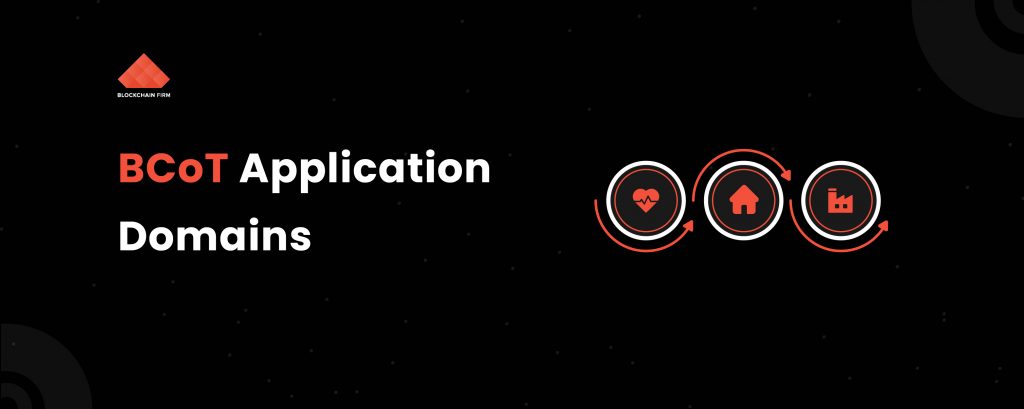
Smart Healthcare
The adoption of the BCoT model can offer huge potential to improve the quality of healthcare. It helps to achieve smart healthcare services, including easy data sharing, secure data storage, and smart medical operation control. In the BCoT Environment, the patient\’s records are collected and stored in secure blockchain nodes. It can be easily accessed through the cloud infrastructure. All the medical operations become streamlined, transparent, efficient, and helps to drive better outcomes.
Smart Industry
A novel paradigm BCoT demonstrates its potential in the improvement of the smart industry for smart efficient manufacturing, transparent supply chain management, lower operational costs, and minimum management efforts through the use of decentralized control capabilities of blockchain and service support of cloud computing.
Smart Home
A smart homeuses interconnected devices to enable remote monitoring and management. With the adoption of the BCoT model, all the data is collected, stored in cloud computing under the management of blockchain miners through a transaction authentication process that facilitates high security for smart home operations.
Conclusion
Thus the integration of two disruptive technologies Cloud of things (CoT) and Blockchain have created new promising business opportunities across many industries. It is becoming important since the BCoT model has offered fine advantages such as enhanced security, high data privacy, and smart service support. If you want to upgrade your business smarter and securely, it is necessary to adopt cutting-edge BCoT architecture.
It is really innovative and requires expertise to handle the BCoT project. Our team of experts has a thorough knowledge of blockchain implementations and their real-time solutions. Reach out to our experts and get complete assistance to implement the future BCoT business model earlier. Move forward your business to gain massive success and stay a pioneer in your industry!
